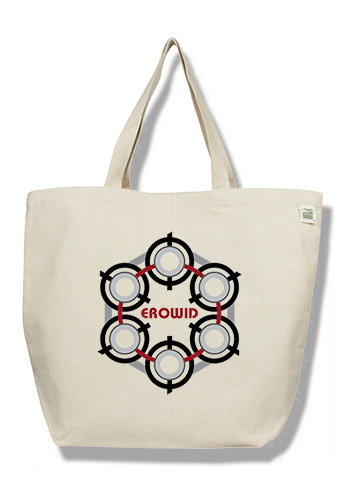which turned out to be MDE
author unknown
1994
INTRODUCTION
In recent months, observers have noticed an increase in the availablility of tablets sold illicitly as "ecstasy", supposedly methylenedioxy methamphetamine (MDMA), in Sydney. One form which has often been reported as known as "Hearts", and appears as a white tablet about 0.5cm in diameter, with a heart shaped emblem imprinted. A large number of these tablets were made available close to New Years Eve. Some experienced users claimed that the effect of the tablets was "smacky", i.e. they thought that it contained heroin in addition to MDMA.
Up until a few months ago, in the Netherlands, the MDMA analogue N-ethyl methylenedioxyamphetamine (MDE, MDEA, Eve) was legal and freely available. With the banning of this substance, it would seem reasonable that the newly illicit stockpiles should have been distributed around the world. In recent years, quality MDMA has been rare in Sydney, and sales of adulterated or forged samples have correspondingly been rife. However, there have been persistant rumours of recent "ecstasy" supplies having their origin in the Netherlands, and indeed this has been used as a marketing point; people tending to believe that if it is imported, it is more likely to contain MDMA. All this suggests a possible link between recent "ecstasy" in supplies Sydney and Dutch MDE, so it is of great interest to analyse a sample of the drug.
EXPERIMENTAL
0.0398g of powdered "heart" tablet was suspended in 20 ml H2O. The supernatant was placed in a separating funnel with 20 ml CH2Cl2, and the residue re-extracted with ca.10 ml H2O. To the combined extracts in the funnel were added 2ml 25% NH3. After shaking, the CH2Cl2 layer was separated, and a further three CH2Cl2 extracts of approximately equal volume were taken. These four extracts were combined, and evaporated under vacuum to yield 0.0121g of basic extract as a pale yellow oil. TLC on silica using butanol/acetic acid/ water (4:1:1) gave a single ninhydrin positive spot (violet, rf 0.55), indicating the probable presence of only one major component. The H1 NMR spectrum of the sample was taken, and found to correspond identically with an authentic sample of pure MDE having been worked up in the same manner. There was no evidence to suggest the presence of MDMA, or other amphetamines.
CONCLUSION
The tablets known as "hearts" and sold as "ecstasy" have been found to contain at least 36% N-ethyl methylenedioxy amphetamine (MDE) (calculated as the hydrochloride salt). No other active substances were found. It is quite possible that the sample had its origin in the Netherlands.
In recent months, observers have noticed an increase in the availablility of tablets sold illicitly as "ecstasy", supposedly methylenedioxy methamphetamine (MDMA), in Sydney. One form which has often been reported as known as "Hearts", and appears as a white tablet about 0.5cm in diameter, with a heart shaped emblem imprinted. A large number of these tablets were made available close to New Years Eve. Some experienced users claimed that the effect of the tablets was "smacky", i.e. they thought that it contained heroin in addition to MDMA.
Up until a few months ago, in the Netherlands, the MDMA analogue N-ethyl methylenedioxyamphetamine (MDE, MDEA, Eve) was legal and freely available. With the banning of this substance, it would seem reasonable that the newly illicit stockpiles should have been distributed around the world. In recent years, quality MDMA has been rare in Sydney, and sales of adulterated or forged samples have correspondingly been rife. However, there have been persistant rumours of recent "ecstasy" supplies having their origin in the Netherlands, and indeed this has been used as a marketing point; people tending to believe that if it is imported, it is more likely to contain MDMA. All this suggests a possible link between recent "ecstasy" in supplies Sydney and Dutch MDE, so it is of great interest to analyse a sample of the drug.
EXPERIMENTAL
0.0398g of powdered "heart" tablet was suspended in 20 ml H2O. The supernatant was placed in a separating funnel with 20 ml CH2Cl2, and the residue re-extracted with ca.10 ml H2O. To the combined extracts in the funnel were added 2ml 25% NH3. After shaking, the CH2Cl2 layer was separated, and a further three CH2Cl2 extracts of approximately equal volume were taken. These four extracts were combined, and evaporated under vacuum to yield 0.0121g of basic extract as a pale yellow oil. TLC on silica using butanol/acetic acid/ water (4:1:1) gave a single ninhydrin positive spot (violet, rf 0.55), indicating the probable presence of only one major component. The H1 NMR spectrum of the sample was taken, and found to correspond identically with an authentic sample of pure MDE having been worked up in the same manner. There was no evidence to suggest the presence of MDMA, or other amphetamines.
CONCLUSION
The tablets known as "hearts" and sold as "ecstasy" have been found to contain at least 36% N-ethyl methylenedioxy amphetamine (MDE) (calculated as the hydrochloride salt). No other active substances were found. It is quite possible that the sample had its origin in the Netherlands.


